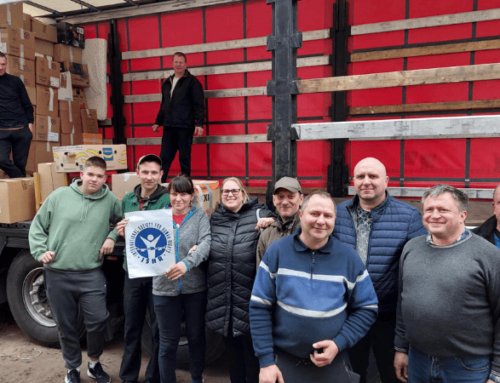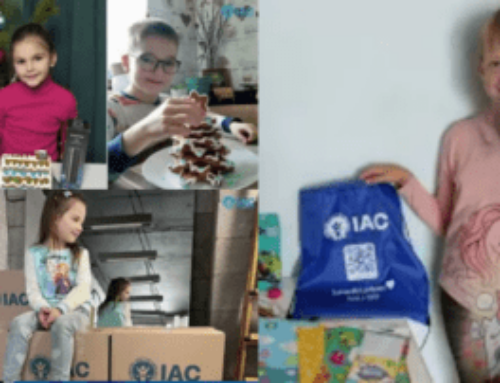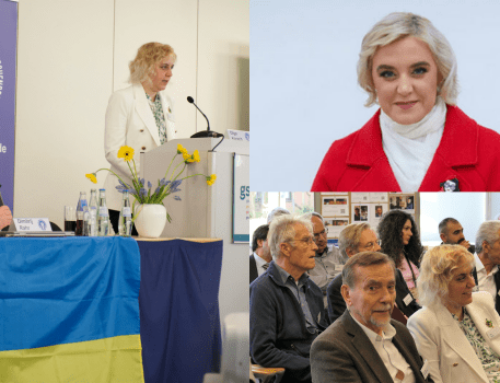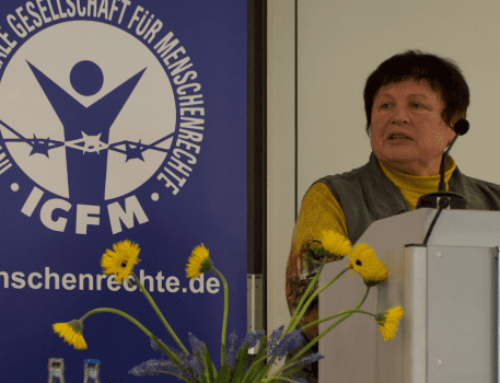INTIMIDATION POLITICS – POLITIKA SAPUGIVANIYA
Russia, MOSCOW, November 2019

| Russian art depicting the last 9 rulers (without current ruler, Putin) exhibited in the Gallery of the House of Happiness in Borovsk, November 2019.
|
This year exactly marks 30 years since I ´ve been in Soviet Moscow. Although I have visited there dozens of times since then, the comparison always remains in my head. It constantly makes me think about, what a different world it has become ever since! In every corner of the city, you can feel here the conurbation of Russia, in which the area Moscow alone is bigger than the Netherlands as a whole! By far, it is the largest capital of Europe in the largest country in the world with approx. 15 million and up to 20 million officially estimated inhabitants. Hypertension!
Traffic-jams – „Propka“
Arrived at Sheremetyevo airport taking good two hours for only 40 kilometers due to the traffic jams on the newly built up to 6-lane roads. Despite intensive road construction, the city is unable to keep up with the crowds. Millions of Muscovites with their large SUVs stand in traffic jams for hours every day. The Metro is also constantly being expanded and transports countless people every day and every minute at top speed. Today, it goes without saying that announcements are always made in English as well, free Metro Wifi is provided like almost everywhere else, and new monitors constantly display modern animation.

| Moscow Metro
|
Even here, however, a journey from one end of the city line to the other can take up to two hours.
Hypermarkets, Gigantism
At many metro stations, hypermarkets have opened, and they leave you speechless with their magnitude, luxury, and abundance of products. Every new one wants to outdo the others. Huge aquarium columns extending over many floors, ultra-modern play centers, gourmet temples, it is everything you can possibly imagine.
The GUM shopping center situated directly on Red Square, where only emptiness existed 30 years ago, is today a paradise-like world full of glitters at the highest level.
Not far from there, the first Mac Donald’s opened after the collapse of the Soviet Union. In the first year, people always stood in the cold for many hours to get in. Today, this giant chain can be found on every corner, but it is nevertheless subordinate to the sea of fast food offers. Quite new but common in today’s Moscow which for example is “Food City” in the south of the capital.
Fotos: Glittering Word, Red Square, 11.2019

| Basilius Cathedral
|

| Illuminated GUM
|

| Glittering street lights |

| The old fountain in GUM surrounded by artistic winter decoration
|

| A glimpse of the Kremlin.
|
Food-City Moscow
I could well imagine that it is the largest fresh food market in the world. Currently pomegranates as far as you can see and even further. It boasts its wide selection of fruits, vegetables, meat, fish, herbs, and spices, all in XXL size. The prices do not differ much to ours either.

Of course, these giants also exist outside the food sector. There are numerous gigantic building centres, technical or leisure centers, new residential and office centres, all of which are gigantic, ultra-modern and luxurious. Internet exists everywhere in the city, nothing works without the appropriate App for the respective need.
Doing business
Russia has moved up to the top 30 of the “Doing Business Index of the World Bank” this year for valid reasons. The city is bursting with its focus on “doing business”. Even in the suburbs of Moscow City, new construction is continuing on a smaller scale.
Everywhere you can find newly built single family houses with varying sizes, construction sites, new roads, and extension of the superstructure. In many of the new “better centres”, however, the big fence around the property and the whole housing unit is never missing.

| In the small town Borowsk, 50 km south of Moscow, you can rent a house, and Lenin is provided free of charge.
|
Of course, they still exist, the residential giants from the Soviet era and the ugly residential colossuses on the edge of the clogged, heavily pulsating veins of the city, which are home to millions of ordinary citizens. They still dominate the majority of Moscow’s population, who are struggling to find their place in the modernization competition and the high pressure imposed by the city.
Millionaires Thrive.
Apparently, the standard of living is rising too, because the average per capital wealth of Russians at mid-year was USD 27,381, according to the Global Wealth Report of the Swiss Bank Credit Suisse. That is an increase of 37 percent since the previous year and 63 percent since 2017. That is certainly not the whole picture though, because such rapid growth in wealth does not apply to average Russian citizens. The gap between the majority of the poor and the rich not only remains, but is also widening steadily. Yet, the number of millionaires is rising steadily and has jumped to almost 250,000 in recent years alone. The number of billionaires continues to grow as well.
Democracy and Human Rights, Politics of Fear „Politika sapugiwanija“
In short, I find myself as a formerly considered exotic plant coming from the West, right now as a wilted leaf from “Hessian Siberia”, on the giant hyperventilating waves of the capital.
As a former Sovietologist, analyzing the “Homo Sovieticus” back and forth, repeatedly describing why the Soviet people lack their own dynamics and a sense of self-responsibility, on the new planet of “doing business”.
As a political scientist and an Eastern European expert of the International Society for Human Rights, attacking the repressive autocracy of the post-Soviet countries for decades, the midst of widespread usage of Internet, free entrepreneurship, and highly pulsating cosmopolitan noise.
How is it even possible to keep this so modern and free development under political control?

| Behind the Kremlin walls, on the left, the 16 m high and 25 t heavy, symbol intensively statue of Grand Duke Vladimir (988 AD), which was solemnly inaugurated in 2016 by the Russian President |
It’s a lot easier than you think: It is a policy of “Intimidation” – inducing fear to the potentially politically engaged population. There are many small signals the power elites are sending, but nevertheless significant and clear: “You can move freely here as long as you don’t get too close to us”.
Here are some examples: Anyone who takes part in demonstrations in Russia may have to pay high fines. These penalties are ten times higher than those for grave cases such as seriously injuring a road user in an accident. Organizers of demonstrations have to face fines that are even more severe. The laws regarding such penalty are so vague that the penalty can be arbitrarily applied and averted. Here in Moscow, demonstrations are also carried out in the XXL manner of the city, and not a few or dozens, but thousands are arrested during demonstrations. Although the majority will be released quickly, the signals for the general population are clear.
On the day of my arrival, a demonstrator named Daniel Beglets, who held back the beating hand of a policeman, received 3 years of imprisonment. Moreover, the human rights organization founded by Lev Ponomaryov, the well-known 78-year-old dissident and the civil rights activist, was forcibly closed.
All of these short “side news” in the constantly rushing media channels, yet evidently.
Furthermore, the landlord cancelled the venue of the conference I came to, which focused on the subject of media and human rights, on short notice claiming that it´s “too political”. Due to the multiple cancellations with the same reason, a room could only be found after making detours.

The policy of the “Sapugivaniya” (Intimidation) proves its effectiveness. While human rights activists enjoyed the privily reverence of millions of Soviet citizens during the Soviet era, and millions turned to Andrei Sakharov’s last honor in days-long queues in icy cold weather, today they tend to have something disreputable and one takes rather distance from them.
Politics of new division with old values
This policy is accompanied by the insecurity towards the West and based on the conservative and orthodox set of values that are still firmly anchored.
The Western foreigner, who was once perceived and celebrated as an exotic from the free, enchanted country, is today thought to be the one who is responsible for the “absurd, unjust” sanctions and crosses “natural” borders with his overused concept of democracy. He is also considered to come from where “gays kiss on the street”, “how many toilets for how many genders exist?”, and “Muslim migrants terrorize the population”.

| Rebuilt Sophia Cathedral in Moscow, center of the revitalized Orthodox attitude to life
|

| Confectionery from the Crimea on the large blade market in Moscow, the Ukrainian saleswoman assures me that she feels safe only in Russia
|
Here, too, always news in the intoxication of the city, as an aside, but clearly.
I love this country and its people for over 30 years now. My friendships from back then cannot be shaken or affected by any of this, but how long will I still be allowed to enter the country, how long will I be able to visit my friends without jeopardizing them? And how strong am I to allow this heavy loss for me?
Dr. rer. pol. C. Krusch, November 2019
#CivilSocietyCooperation








Leave A Comment